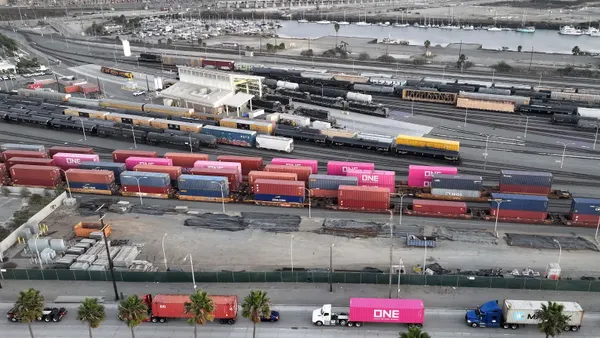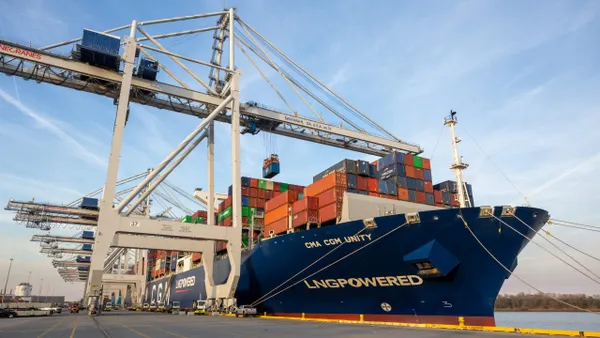Dive Brief:
- Though shipping incidents, including fires, were down in aggregate in 2019, specific cargo threats, such as ship fires and machinery damage, rose in 2019 according to Allianz's 2020 Safety and Shipping Review released last week. Machinery damage is the most common incident type — up 5% in 2019 compared the previous year. Ship fires leading to total losses are on the rise, growing 13% year over year in 2019, though they still represent a minority of total losses.
- Ro-ro vessels continue to be among the most incident-prone. In 2019 there were 15 total losses of ro-ro vessels, with three out of four lost vessels sinking or wrecking.
- The number of incidents that fell short of total loss was up 20% year over year in 2019. One in three total losses took place in South China, Indochina, Indonesia and the Philippines — what Allianz called a "the global hot spot" for vessel loss due to the concentration of global trade and older vessels in the region. Three-quarters of the 41 lost ships sunk, while the remaining quarter were lost due to fire or explosion, wreck or grounding, collision with another vessel, or hull damage.
Dive Insight:
Alllianz warned the economic impacts of the coronavirus on shippers, carriers and workers will encourage cost-cutting, which often negatively affects safety.
"We know from past downturns that crew and maintenance budgets are among the first areas that are cut," said Rahul Khanna, Global Head of Marine Risk Consulting at Allianz Global Corporate & Specialty, in the report, stating the importance of maintaining safety and maintenance budgets amid cost-cutting.
Safety measures and conscientious maintenance protect people and cargo. Even on land, the pandemic has made claims of damaged containers and goods more likely — especially for high-value and temperature-sensitive cargo — because supply chain disruptions at various links have caused delays in usual operations.
Khanna suggested Internet of Things (IoT) technology could help actively monitoring some of these potential pitfalls and put more power and information in the hands of the shipper in the case of an insurance claim.
Along with most supply chains, parts and materials for ship maintenance have also experienced disruption, raising concern about problems at sea related to machinery damage — already the most common cause of shipping incidents over the last decade, according to the report.
“The current situation is making it difficult for vessels to obtain essential spares and consumables, and carry out maintenance and repairs. This could have a detrimental effect on the safe operation of engines and machinery and potentially cause damage or breakdown, which in turn can lead to groundings or collisions,” said Khanna.
Lockdowns have also affected some inspection and servicing activities meant to ensure vessel safety. Technology may be able to help carriers shift to more predictive and preventative maintenance to reduce machinery damage, according to the report.
All of these issues are exacerbated by the trend toward larger vessels across the cargo spectrum.
A lower level of overall ocean traffic should bring the number of incidents down in aggregate. But operating during an economic downturn spurred on by a global pandemic may not bring a reduction in the likelihood that shippers will be affected by safety incidents or lost cargo in 2020.














